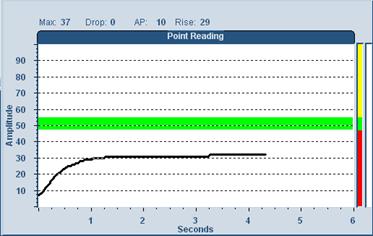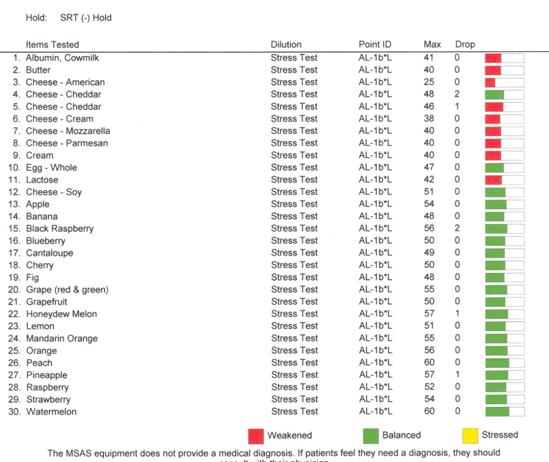
Food Sensitivities/Allergies
February 21, 2011
-
Food sensitivities are typically delayed and inconsistent making diagnosis difficult.
-
Food sensitivities cause varying symptoms from one person to the next.
-
One of the most innovative ways to test for food sensitivities is with Biomeridian Analysis.
-
A Biomeridian test process is a bioenergetic analysis of acupuncture points which reflects a spectrum of body systems.
-
The various food groups and individual foods can be systematically tested to create a “sensitivity” list to then be used on a 2-4 month withdrawal diet.
-
The true confirmation of a food sensitivity is a positive result with the withdrawal diet.
photo via ezwebrus.com
Progressively more people are developing food sensitivities each year. This trend is thought to relate to several factors including genetic modification of crops, high levels of antibiotics in animal based food altering digestive tract bacteria, the diverse numbers of chemical additives used in food and other assorted factors.
Unlike food allergies which cause aggressive symptoms closely related to the food exposure, food sensitivities are typically delayed and inconsistent making diagnosis difficult. They also do not cause the body to produce antibodies against the offending foods making blood tests unhelpful.
Food sensitivities are also puzzling in that they cause varying symptoms from one person to the next. Some of the symptoms and signs that food sensitivities cause include:
-
Digestive symptoms such as reflux, bloating, gas, diarrhea, etc.
-
Atopic disease such as asthma and eczema
-
Autoimmune disease
-
Sleep disturbance
-
Fatigue
-
Skin conditions
-
Chronic joint and/or muscle aches/pains
-
Sinus and/or ear congestion
While this list includes some of the more common symptoms, food sensitivities can cause broader, more diverse symptoms based on their mechanism, inflammation. Any symptom or problem can be caused or worsened by inflammation may result from a food sensitivity reaction.
Food sensitivities and their symptoms or secondary problems tend to become very chronic. The chronicity stems from two reasons. First, the delay between the food exposure and the symptoms prevents early diagnosis. Secondly, some foods that trigger sensitivity actually activate pleasure and reward centers in the brain. When we should connect food “A” and symptoms, we are misled by a period of pleasurable feeling immediately after eating these foods.
One of the complex body reactions in dealing with adapting to abnormal situations is to up-regulate chemicals in the brain called opioids. This creates a period of “feeling good” between the food exposure and feeling bad. The natural tendency is to be fooled into thinking that “eating __XXX__ doesn’t cause me any trouble.”
How Can Food Sensitivities be Diagnosed?
Because of the traits of food sensitivities they are very difficult to isolate and treat. However, doing so may be very rewarding in terms of patient improvement. One of the most innovative ways to test them is with Biomeridian Analysis. This test process is a bioenergetic analysis of acupuncture points which reflects a spectrum of body systems. A balanced or normal point within the allergy response system can be re-measured with different food challenges. A positive reaction to a food will cause the point to significantly imbalance.
Balanced Allergy System Point
Same Point Stressed Against Milk
The various food groups and individual foods can be systematically tested to create a “sensitivity” list to then be used on a 2-4 month withdrawal diet. An example of the sensitivity list is shown below.
The typical patient has sensitivity to 2 to 5 foods, although it can be a single food or a larger group. The true confirmation of a food sensitivity is a positive result with the withdrawal diet. Once the true association between symptoms and food sensitivity is seen, the individual is happy to avoid these foods and enjoy good health.



